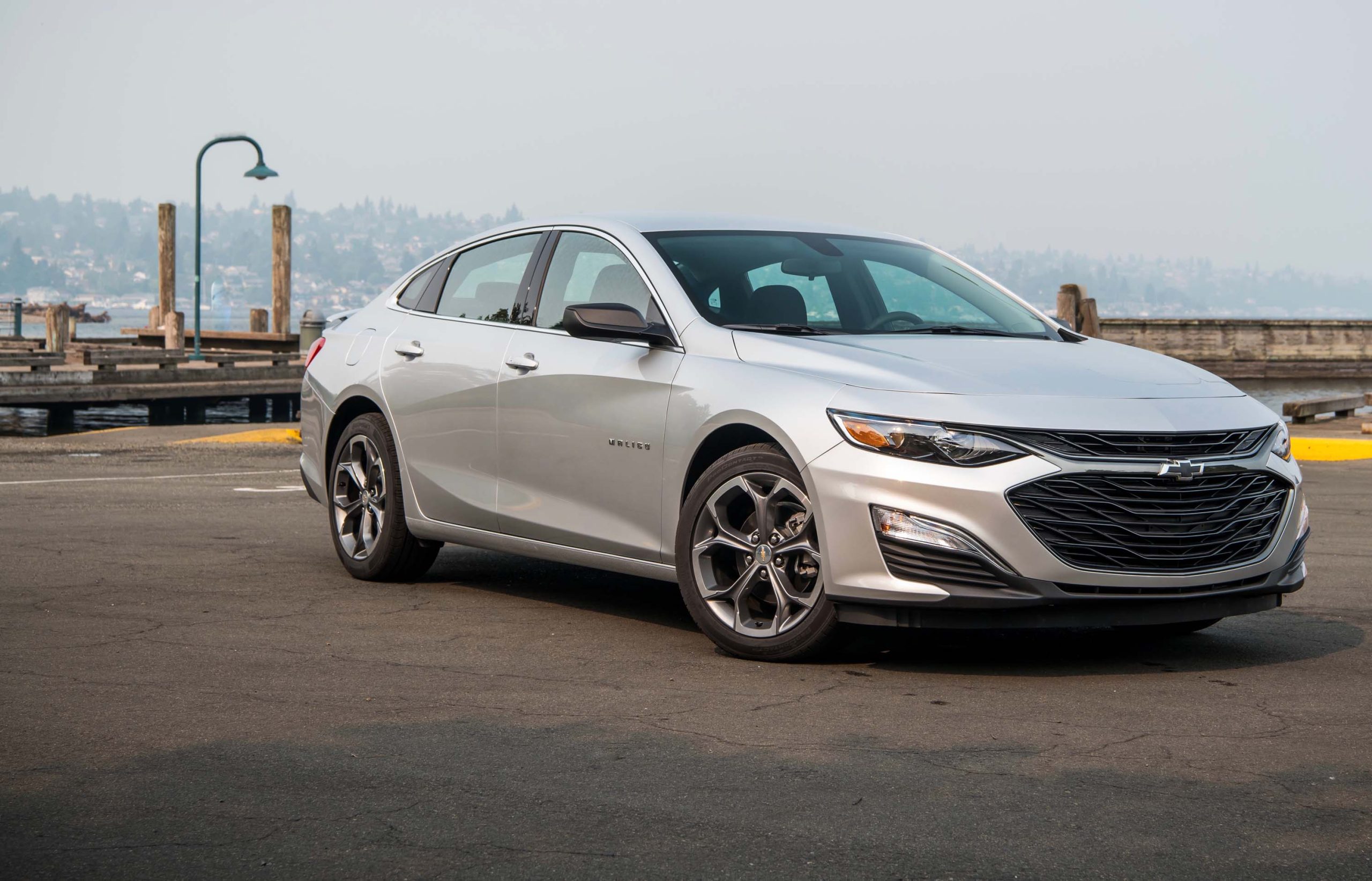Since the beginning of the 21st century, the hybrid vehicle market has firmly positioned itself as the transitional phase between traditional internal combustion engines (ICEs) and the emerging world of electric vehicles (EVs).
Throughout the 2010s, the popularity of used hybrid cars grew significantly, offering buyers the opportunity to experience the technology without fully committing to the relatively untested realm of self-charging hybrids.
As these vehicles consistently demonstrated their dependability, fuel economy, and cost-effectiveness, they emerged as an appealing option for cost-conscious drivers looking for long-term value.
Hybrids With Batteries Lasting 200k mi
Today, they are offered by virtually every automaker that has operated in the U.S. over the past 25 years.
This growing demand reflects a consumer trend favoring vehicles that strike a balance between modern innovation and established reliability, and the models listed below are known for their strong track records in both quality and dependability.
2019 Hyundai Sonata Hybrid
The 2019 Hyundai Sonata Hybrid delivers a compelling mix of affordability and efficiency in the midsize sedan category, a segment that was among the first to adopt hybrid powertrains.
First introduced in 2011, the Sonata Hybrid was one of the earliest family sedans to gain wide acceptance in the hybrid space.
Powered by a 2.0-liter inline-4 engine paired with a single electric motor, this model produces 193 horsepower and 151 lb-ft of torque, mated to a 6-speed automatic transmission and front-wheel drive.
It offers an impressive driving range of 652–668 miles, with fuel economy ratings of 39–40 mpg in the city, 44–46 mpg on the highway, and a combined 41–42 mpg. Acceleration from 0 to 60 mph takes just 7.6 seconds.
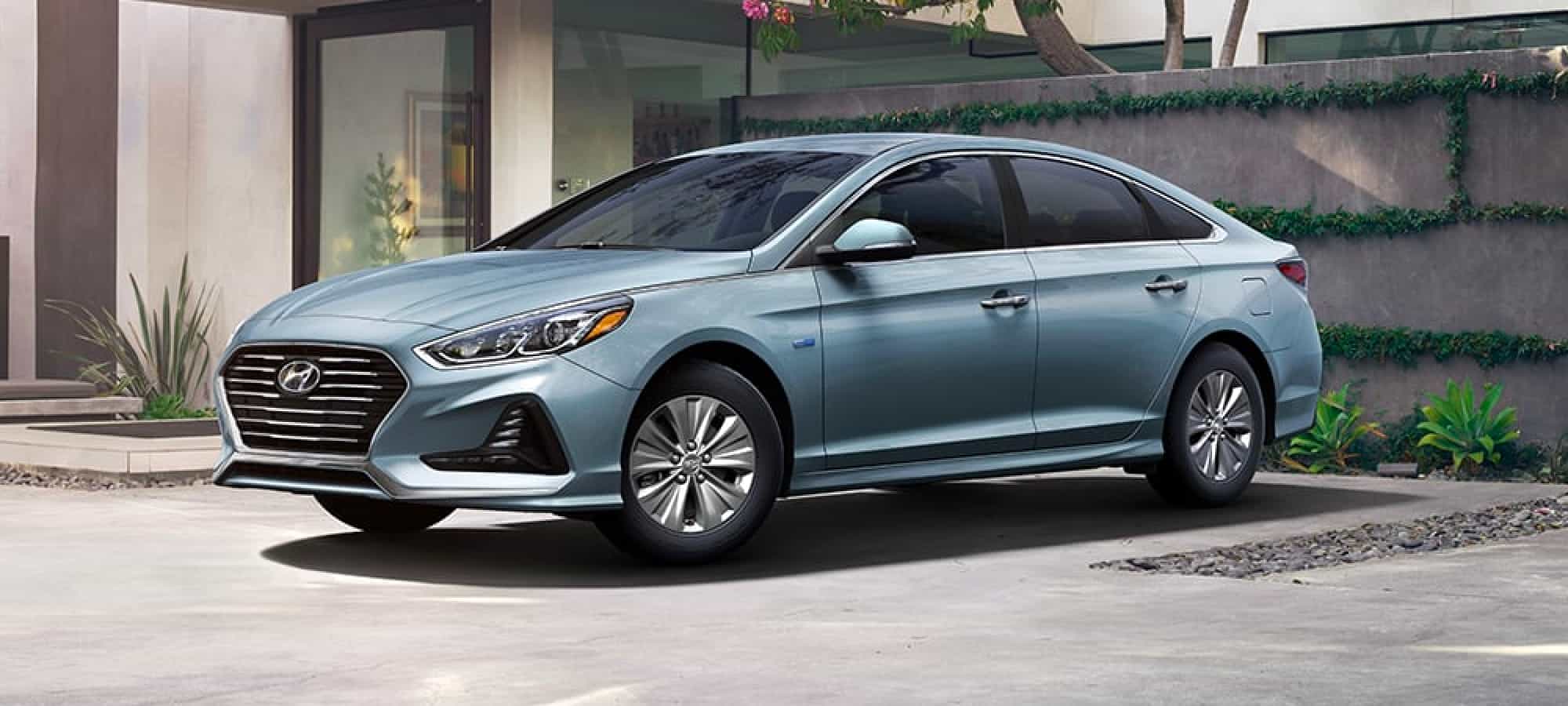
Priced between $12,718 and $18,158, the 2019 Sonata Hybrid may not boast the most powerful powertrain in its class compared to competitors like the Honda Accord, Toyota Camry, and offerings from Chevrolet, Ford, and Nissan, but it is known for its smooth drive and solid fuel efficiency.
On the reliability front, the Sonata Hybrid holds a RepairPal Reliability Rating of 4 out of 5, with an estimated annual maintenance and repair cost of $627, and it has had zero recalls.
Over the years, the Hyundai Sonata evolved from a budget-friendly alternative to the Japanese mainstays into a serious contender.
This is reflected in its J.D. Power Quality & Reliability Rating of 89/100. However, Consumer Reports presents a more critical view, rating it just 52/100 for Reliability and 1/5 for Owner Satisfaction.
2012 Lincoln MKZ Hybrid
The 2012 Lincoln MKZ Hybrid made a significant impact in the mid-size sedan segment during a time when family and luxury sedans sought ways to enhance appeal.
This hybrid distinguished itself through its conservative yet elegant styling and notably, its affordability it was priced on par with its non-hybrid counterpart.
Equipped with a 2.5-liter inline-4 engine and two electric motors, the MKZ Hybrid delivers 191 horsepower and 136 lb-ft of torque through a continuously variable transmission and front-wheel drive.
It offers a driving range of 665 miles and achieves fuel efficiency of 41 mpg in the city, 35 mpg on the highway, and 38 mpg combined.
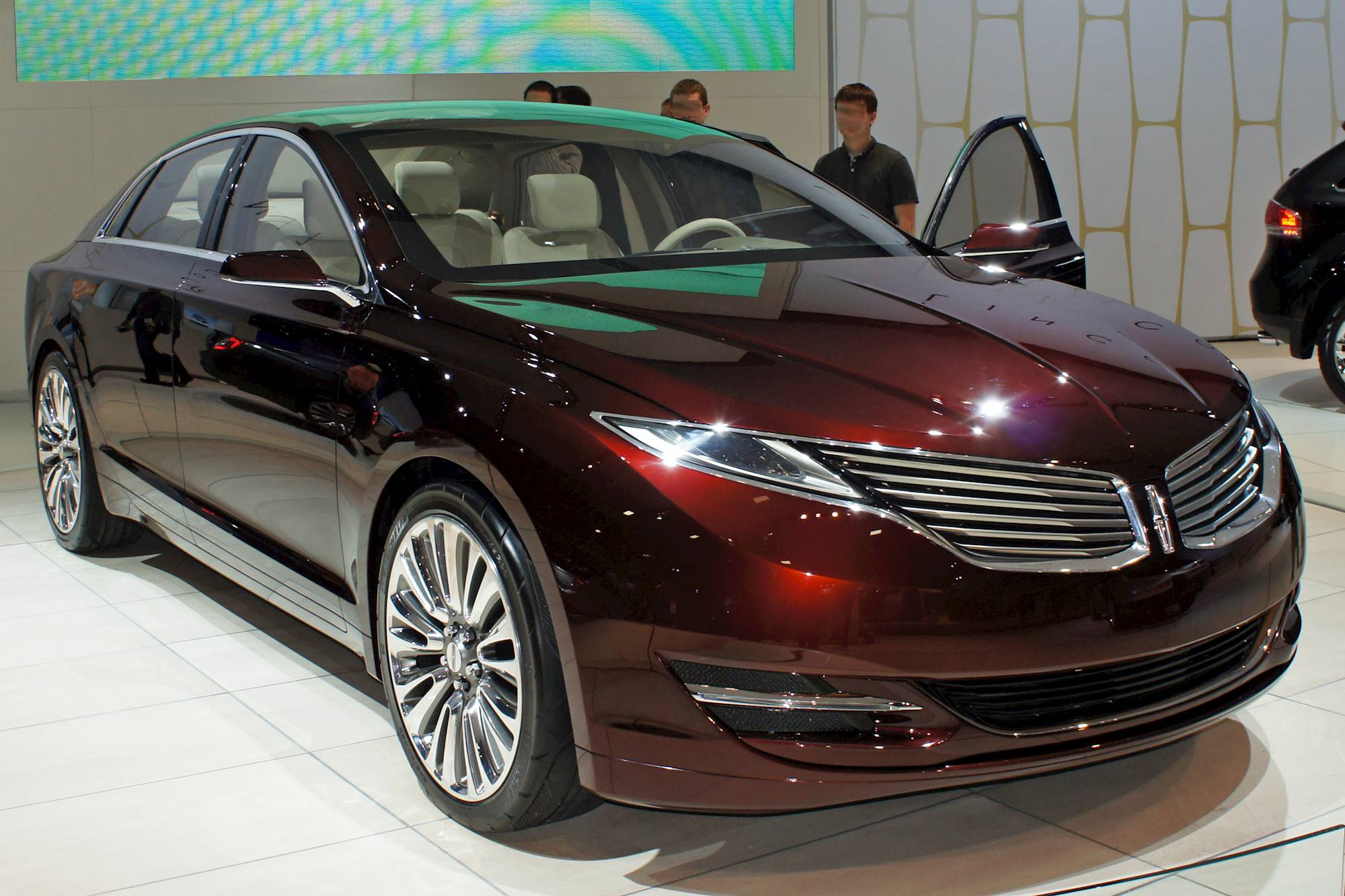
It accelerates from 0 to 60 mph in 7.2 seconds and has a low average price of $5,647, making it an appealing entry-level luxury hybrid.
The powertrain is derived from Toyota’s 2.5-liter Atkinson-cycle hybrid system, providing acceptable performance and unexpectedly good fuel economy for a luxury vehicle.
In terms of reliability, it holds a RepairPal Reliability Rating of 3 out of 5, with an annual maintenance cost of $866 and six recalls on record.
Despite some reliability concerns, the 2012 MKZ Hybrid received high praise from owners, earning an 89/100 Quality & Reliability score from J.D. Power. Consumer Reports awarded it 4/5 for Owner Satisfaction but rated its Reliability at a below-average 38/100.
2014 Toyota Camry Hybrid
The 2014 Toyota Camry Hybrid reinforced Toyota’s reputation for merging fuel efficiency with the comfort of a midsize sedan.
Built on the dependable legacy of the Camry, the hybrid version elevated fuel economy benchmarks while maintaining a smooth and composed ride, making it a popular option among family sedan buyers.
It runs on a 2.5-liter inline-4 engine combined with two electric motors, delivering 200 horsepower and 156 lb-ft of torque via a continuously variable transmission.
The vehicle is front-wheel drive, with a driving range between 663 and 680 miles. It offers fuel economy figures of 40–42 mpg city, 37–38 mpg highway, and 39–40 mpg combined.
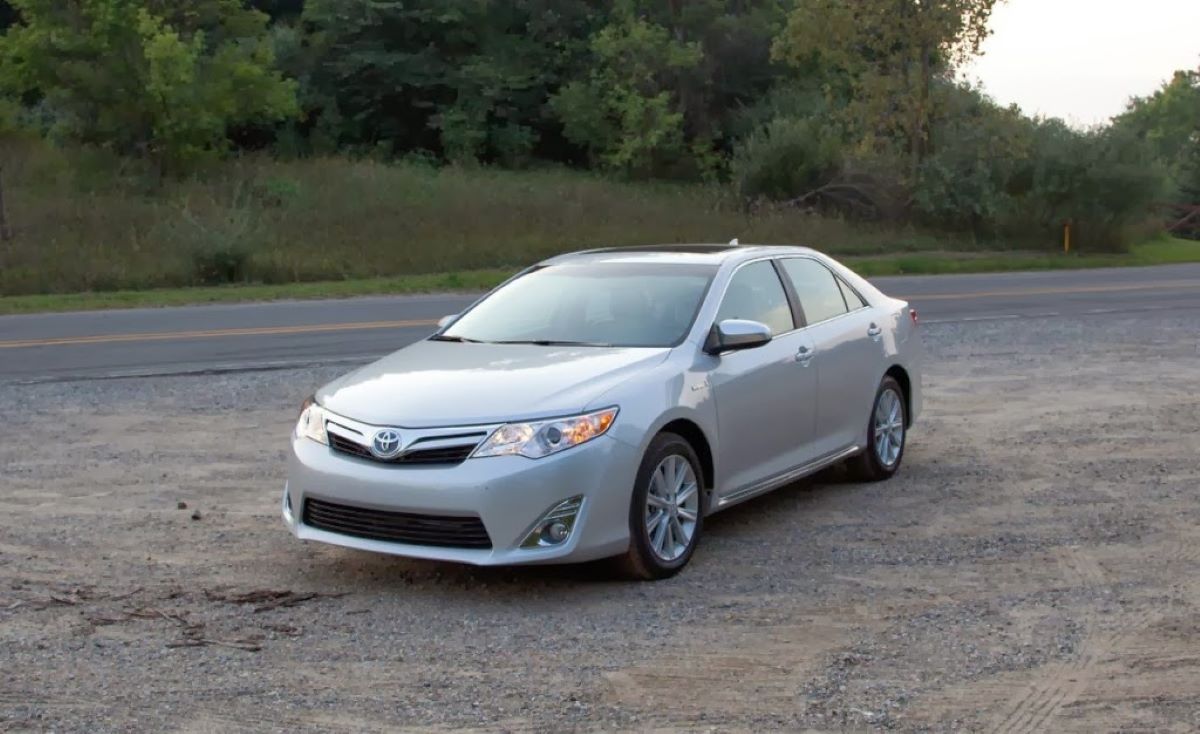
With a 0–60 mph time of 7.4 seconds and a price range between $9,172 and $11,221, the Camry Hybrid continues to be a reliable, cost-effective hybrid option.
Utilizing Toyota’s proven 2.5-liter engine and electric motor Hybrid Synergy Drive (HSD), the 2014 Camry Hybrid provides excellent performance and fuel economy.
Reliability-wise, the vehicle maintains a 4 out of 5 RepairPal rating, with a low annual maintenance cost of $446 and three recalls. J.D. Power commended the 2014 Camry for its Quality & Reliability, Driving Experience, and Resale Value.
Consumer Reports also rated it highly with a 5/5 for Owner Satisfaction and a strong 74/100 for Reliability.
2010 Lexus RX 450h
Continuing Toyota’s trend of hybrid innovation, the 2010 Lexus RX 450h stands out as one of the first luxury hybrid crossovers.
Following the RX’s reputation as a pioneer in the luxury SUV space, the hybrid model elevated the standard by offering enhanced fuel efficiency without compromising luxury or performance, as indicated by the “450” designation.
This RX variant comes with a 3.5-liter V6 engine paired with either two or three electric motors, generating 295 horsepower and 234 lb-ft of torque through a continuously variable transmission.
Buyers could choose between front-wheel or all-wheel drive. It has a driving range of 557–576 miles, with city mileage of 30–32 mpg, 28 mpg highway, and 29–30 mpg combined.
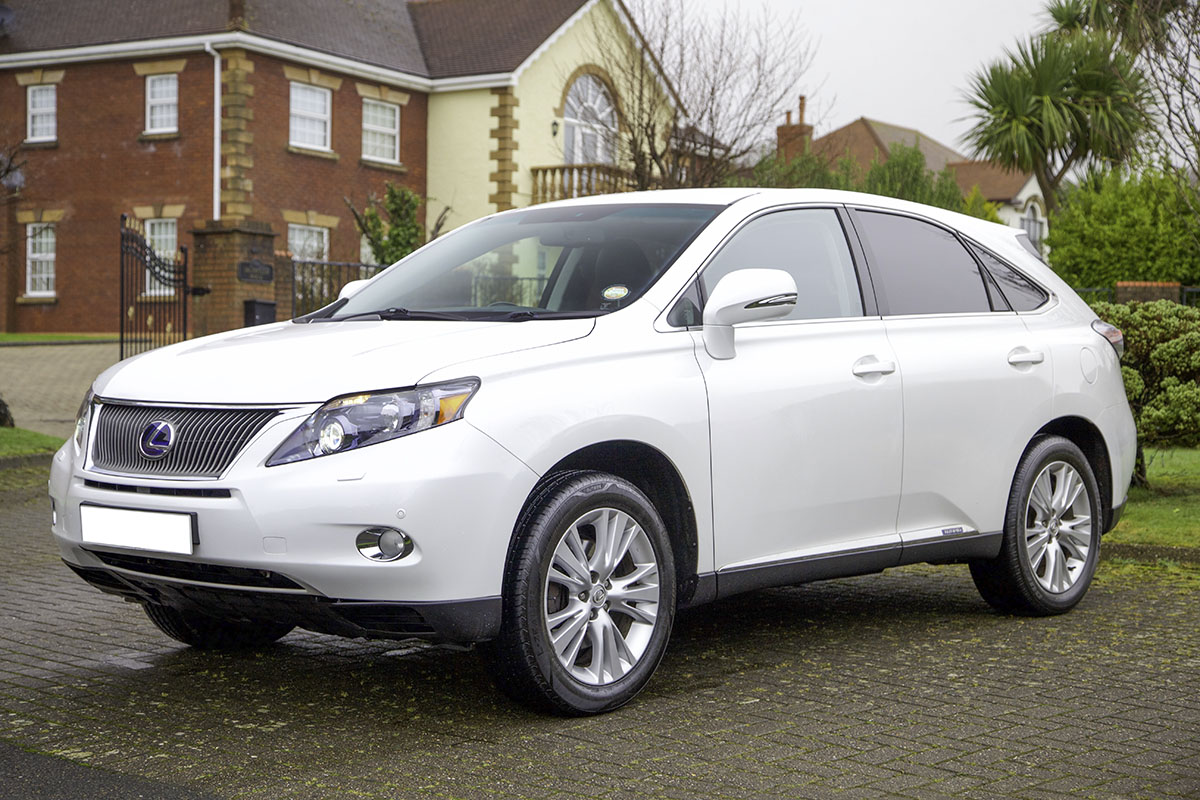
It accelerates from 0 to 60 mph in approximately 7.1 to 7.4 seconds, and the average starting price is $9,192.
The RX 450h features Toyota’s Hybrid Synergy Drive tailored to luxury performance, delivering both impressive power and fuel economy while maintaining Lexus’s signature quiet and smooth ride.
On the reliability scale, it scores a 4 out of 5 from RepairPal, with an estimated annual maintenance cost of $783 and just one recall. J.D. Power awarded it a Quality & Reliability score of 93/100.
Consumer Reports was similarly impressed with a 5/5 rating for Owner Satisfaction, although its Reliability score came in at a moderate 63/100.
2017 Lexus ES 300h
The 2017 Lexus ES 300h represents the pinnacle of hybrid refinement in the premium midsize sedan segment, continuing Lexus’s tradition of blending luxury, design, and environmental responsibility.
Introduced in 2012, the ES 300h quickly established benchmarks for fuel economy and cabin sophistication in the hybrid market.
It uses a 2.5-liter inline-4 engine coupled with two electric motors to produce 200 horsepower and 156 lb-ft of torque, channeled through a continuously variable transmission and front-wheel drive.
The ES 300h offers a generous range of 688 miles and delivers 40 mpg in the city, 39 mpg on the highway, and 40 mpg combined.
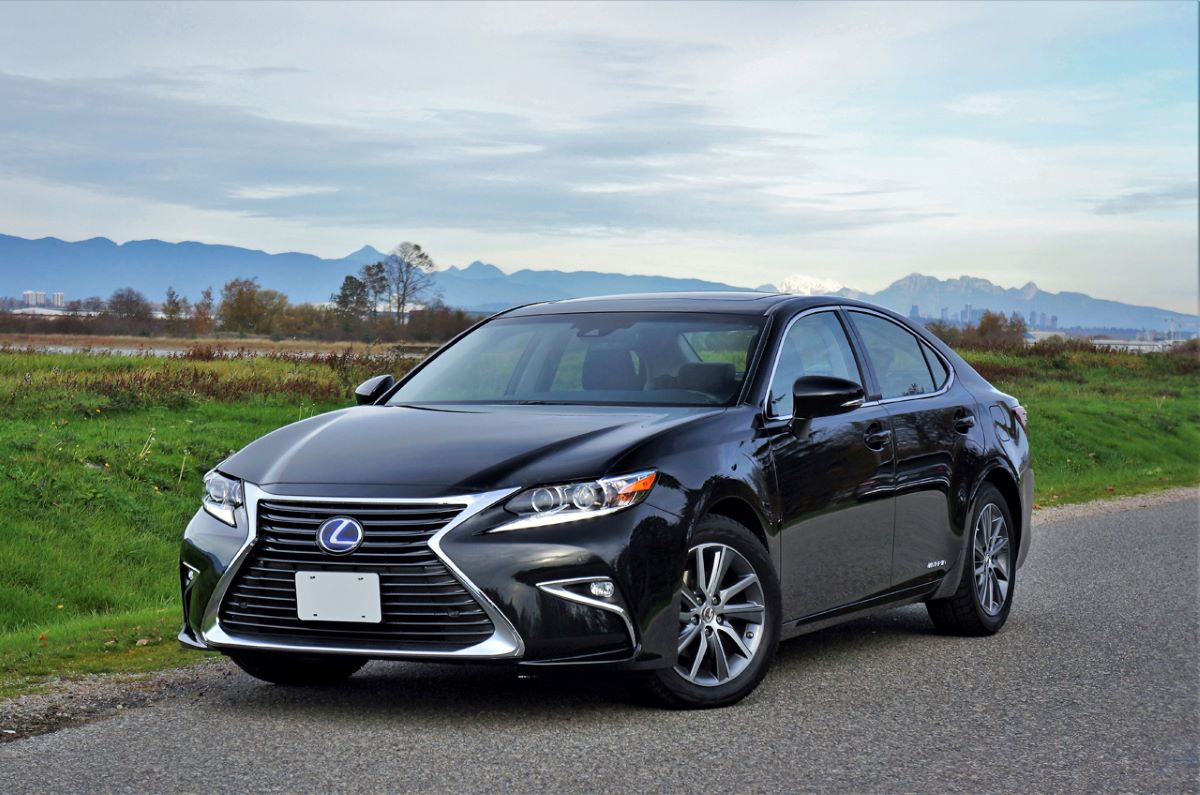
It reaches 60 mph in 7.8 seconds and has an average market price of $21,534.
Sharing its platform with the Toyota Avalon, the ES 300h also shares its efficient powertrain, achieving impressive fuel economy while upholding the serene and plush driving experience expected from Lexus.
Reliability is one of its strongest suits, earning a 4.5 out of 5 from RepairPal, with maintenance costs estimated at $585 annually and no recalls on record.
According to J.D. Power, it is the highest-rated hybrid of the decade, with a Quality & Reliability score of 96/100.
Consumer Reports echoed this sentiment, giving the 2017 ES 300h an excellent Reliability score of 94/100 and a perfect 5/5 for Owner Satisfaction.
Hybrids Batteries With Early Failures
Hybrid cars aren’t all built the same. While many models deliver strong performance, reliability, and impressive fuel economy, others don’t quite measure up.
With such a wide range of choices available, it can be difficult to distinguish the top performers from those that are less dependable.
The vehicles highlighted in this article, although they carry an eco-friendly image, have been associated with various concerns that prospective buyers should consider carefully and perhaps steer clear of.
2020 Ford Escape Hybrid
The 2020 Ford Escape Hybrid stands out as a fuel-efficient SUV that delivers impressive fuel economy, but it has also been associated with several notable problems.
One of the most frequently reported issues involves the SUV’s transmission. Owners have noted experiencing rough and abrupt shifting, with some even needing to rebuild or completely replace the transmission.
The 2020 Ford Escape has several appealing qualities. Among its pros are “roomy and comfortable seating,” “smooth ride quality,” “easy-to-use controls,” and an “available hybrid powertrain that gets around 40 mpg.”
However, it’s not without its drawbacks. The “transmission’s abrupt and noticeable shifts” and “lackluster handling and generally not much fun to drive” are listed as cons. What’s new for 2020 is that “the Ford Escape is fully redesigned.”
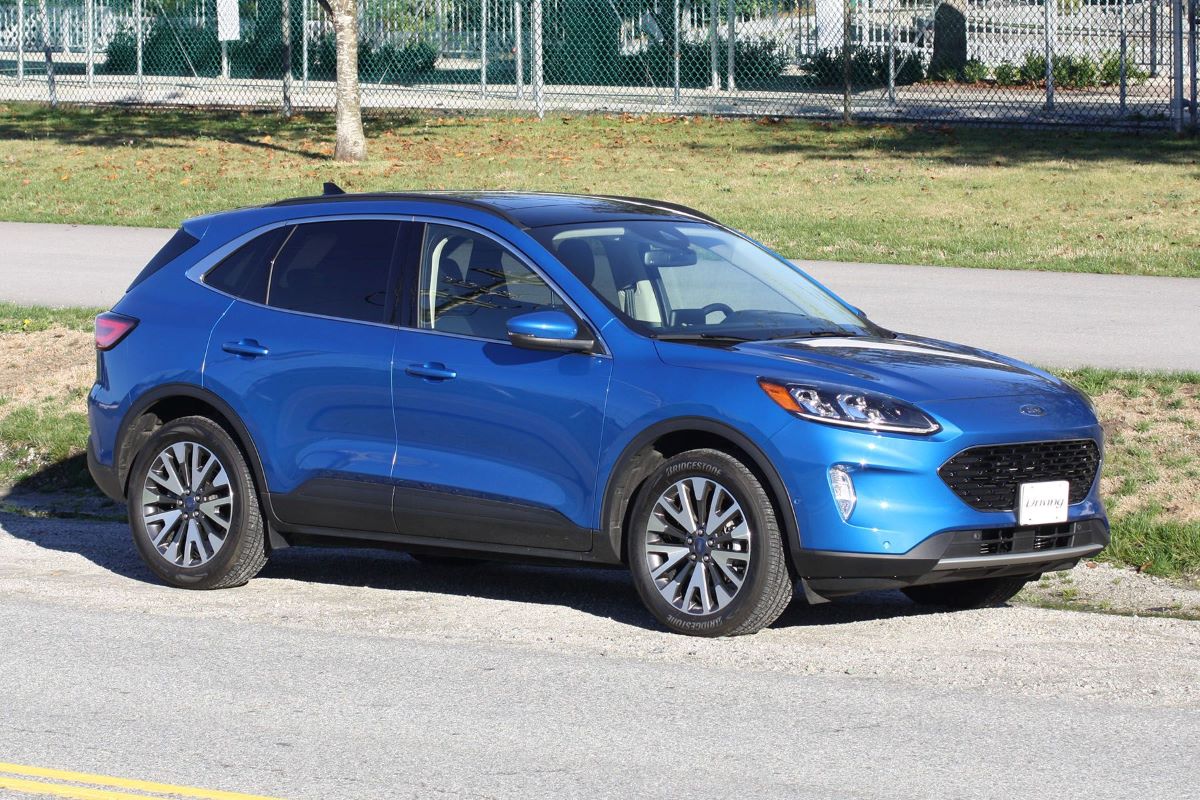
Also, the “hybrid version is back after a prolonged absence,” there is “improved power and acceleration,” and the redesign “kicks off the fourth Escape generation.” With these updates, Ford has redesigned its popular Escape small SUV for 2020.
As before, it’s a sensible and practical vehicle that can do just about anything you need it to. Bigger than Ford’s EcoSport SUV but smaller than the three-row Explorer, the Escape competes against other well-known models such as the Chevrolet Equinox, Honda CR-V and Toyota RAV4.
A revamped exterior design gives the Escape a sportier look for 2020, and there’s a roomier interior. The rear seat, in particular, has plenty of legroom, which is great for adults or parents looking to install a bulky child safety seat.
Other highlights of the new Escape include an easy-to-use infotainment touchscreen, plenty of advanced driver safety features, and a new hybrid version that promises around 40 mpg in combined city/highway driving.
2014 & 2015 Nissan Pathfinder HEV
“The Pathfinder Hybrid models from these years experienced problems with their braking systems and electrical issues,” said Giranda.
“Some owners reported less responsive brakes, which is a major safety concern.
Additionally, electrical glitches in the infotainment and navigation systems were common, detracting from the overall reliability of the vehicle.”
In addition to these concerns, owners have reported several other recurring issues with the Nissan Pathfinder Hybrid model. These include shuddering and noticeable vibrations during gear shifts.
There have also been instances where the vehicle failed to accelerate following a panic stop, further raising concerns about its performance and dependability.
Nissan caught a lot of people off guard last year when it revamped the Pathfinder. The update coincided with the decision to ditch the ladder-type frame borrowed from the Titan pick-up.
It went from being an authentic SUV to a large crossover with a unibody, front-wheel drive and optional all-wheel drive for rides down secondary roads or snow-covered routes but definitely not for off-roading.
The other surprise was the vehicle’s increased dimensions. The already bulky machine was given a larger trunk (11 cm wider, 12 cm longer) in addition to an extra 5 cm for the wheelbase. When I first saw the new Pathfinder, I was really surprised by its size.
The new generation is powered by the tried and true 3.5-litre V6, which is known for being both robust and versatile. It produces 260 horsepower and is paired with a continuously variable transmission that performs just slightly above average.
The V6 accelerates decently and offers good pick-up, but its fuel consumption is a little on the high side. I got an average of 14.6 L/100 km, which is a far, far cry from Nissan’s claim of 10.8 L/100 km. You gotta admit that’s disappointing.
At least the Pathfinder’s road handling isn’t too bad, especially when you consider its size and relatively high centre of gravity. It offers good linear stability on the highway and well controlled body roll in corners.
The dashboard is a patchwork of Nissan’s various trends for displaying controls, dials and buttons. The effect seems both dense and scattered at first, but it doesn’t take long to figure out and is actually quite intuitive in the end.
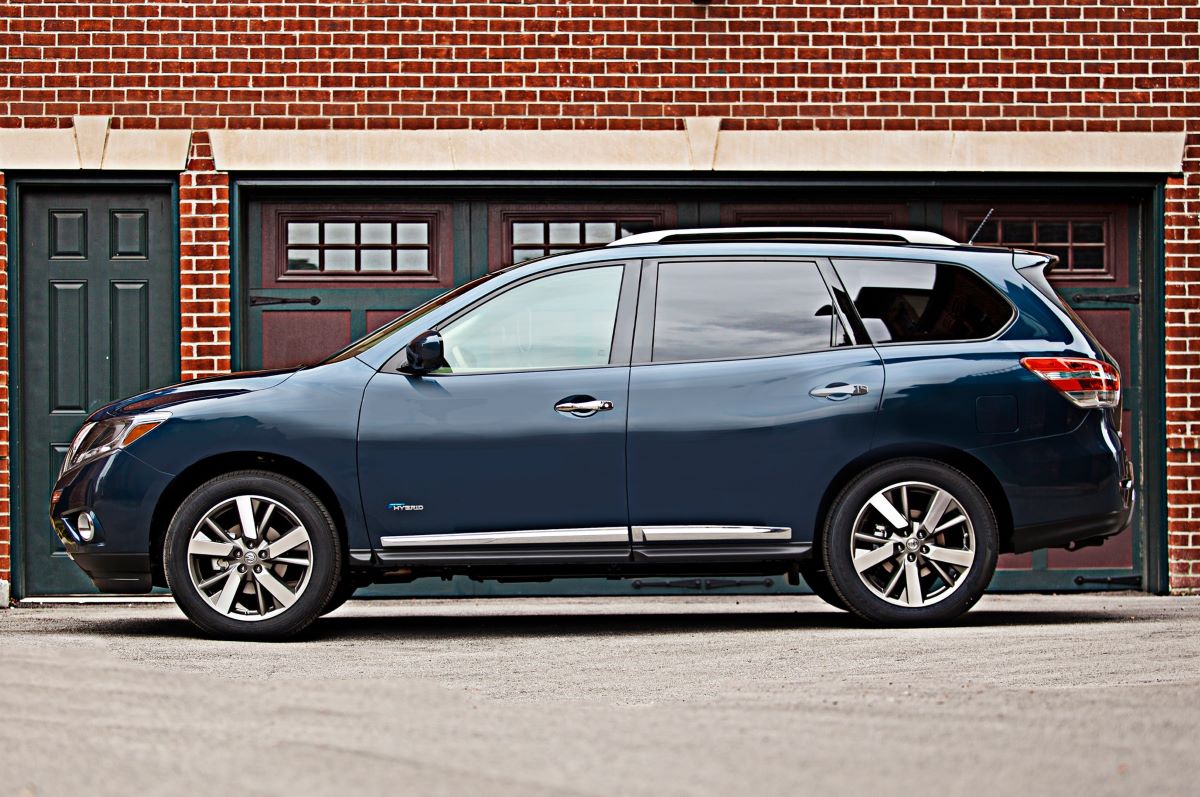
Overall, the Pathfinder isn’t a bad choice for people who often travel as a group. When I called it a “cruise liner,” I didn’t mean it in a bad way. Rather, I was referring to the vehicle’s spaciousness, comfort and ability to cover hundreds of kilometres without causing undue fatigue or discomfort to its passengers.
Unfortunately, its high fuel consumption is sure to discourage more than a few buyers. But there’s always the chance that a hybrid version might be offered, right? Would that be a better choice?
Nissan management could have struck a deal with Toyota to include their hybrid system in the Pathfinder. But instead they asked their engineers to develop a proprietary system.
First, the 2.5-litre V6 is replaced by a supercharged 2.5-litre engine paired with a 15 kW electric motor, which is powered by a lithium-ion battery. Their total combined output is 250 horsepower and 243 lb.-ft. of torque. That’s almost the same as the V6’s 260 horsepower and 240 lb.-ft. of torque.
That much of the hybrid system is fairly conventional. Located between the gas engine and the Xtronic CVTMD gearbox, the electric motor also acts as a generator, transmitting power from the CVT to the battery when braking.
But what’s different about this system is the dual-clutch system that efficiently manages power coming from the electric and gas engines.
One clutch is installed between the two engines while the other sits between the electric mill and the CVT. The very compact lithium-ion battery sits under the third row of seats and doesn’t encroach on the vehicle’s interior.
This means that you can slide the second-row seats forward for easier access to the rear seats. And finally, like in all hybrid systems, the regenerative braking system automatically recharges the battery by converting the vehicle’s kinetic energy during braking.
According to Nissan, the Pathfinder Hybrid’s combined fuel consumption is 7.4 L/100 km. So when you consider that the gas tank holds 73 litres, it stands to reason that the vehicle’s range could exceed 1,000 kilometres. Does the Pathfinder Hybrid live up to its promise?
I had the chance to drive it twice. The first time was in Nashville, Tennessee. For just under two hours, I drove it around America’s country music capital. I immediately noticed that its fuel consumption was markedly higher than Nissan had claimed. And yet, my city driving was as green as it gets.
I also noticed that the gas engine didn’t automatically shut off when the vehicle stopped, as is the case in most other hybrid vehicles. In a chance move, I turned off the air conditioner and only then did the engine cut out when I stopped the vehicle. Not what you’d call the most refined system.
Last March, I tried the Pathfinder for a second time. I kept it for a week in the Montreal area, splitting my time between city streets, highways and country roads. I kept my driving style normal. But by the end of the week, the fuel consumption that had been recorded was just under 15 L/100 km—twice as much as Nissan’s claim.
With no fuel savings, you’ve seriously got to wonder what’s the point of buying a Pathfinder Hybrid. Not only does it consume almost as much gas as the conventional version, it costs $7,000 more. And during a test of a more expensive and more luxurious Infiniti QX60 Hybrid we noticed a similar fuel consumption rate.
It’s a shame that Nissan put so much work into developing a clever hybrid system whose performance is ultimately disappointing. Buyers are better off saving their money and opting for the conventional version instead. At least until Nissan comes up with a solution to the problem.
2011-2015 Volkswagen Touareg Hybrid
This hybrid model was appealing due to its speed, but the seriousness of the recalls made it a questionable choice.
The main issue involved inadequate drainage beneath the battery, which led to short circuits and, in some instances, fires.
“VW determined water could enter without the rear hatch open because the sunroof drains and rear lid seals weren’t assembled correctly,” according to VWProblems.
There were also additional recalls, including one for a missing clip on the brake pedal pivot pin, which could cause the brake pedal to detach, and another for a leak in the fuel injection system.
The 2015 Volkswagen Touareg receives several updates, including refreshed front and rear styling, standard LED taillights, redesigned headlights, and an improved interior.
Additionally, a suite of advanced safety features has been added to the model, such as adaptive cruise control, lane assist, side assist, front assist, and automatic post-collision braking.
The 2015 Volkswagen Touareg Hybrid is a two-row, all-wheel-drive luxury SUV powered by a combination of a supercharged 3.0-liter V-6 engine and an electric motor.
Together, they generate a combined output of 380 horsepower and 428 lb-ft of torque, paired with an eight-speed automatic transmission. Fuel economy for the hybrid is competitive within its class, coming in at 20 mpg in the city and 24 mpg on the highway.
Unlike other models in the lineup, the 2015 Touareg Hybrid is offered in a single, fully equipped trim level. It carries a base price of $67,905, placing it at a higher price point than the slightly smaller Audi Q5 Hybrid.
The interior of the 2015 Volkswagen Touareg Hybrid stands out with its high-quality materials and precise craftsmanship, appropriate for a premium vehicle.
The infotainment system is centered around a large eight-inch touchscreen that is intuitive and user-friendly. Rear seat passengers benefit from ample legroom, while cargo capacity reaches up to 64 cubic feet when the split-folding second row is laid flat.
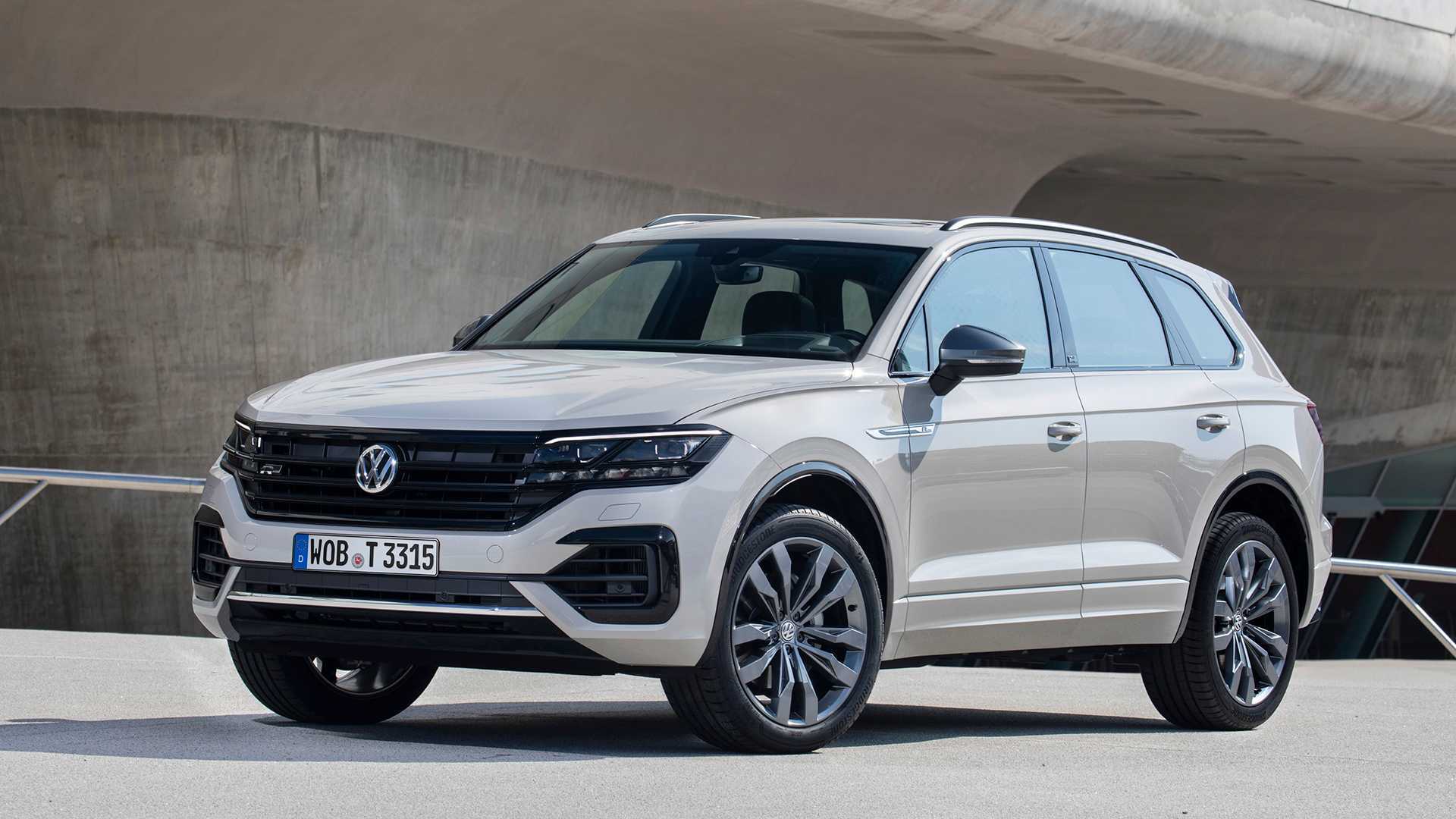
The second row is also adjustable, sliding forward and backward to provide flexibility between passenger comfort and cargo space depending on the owner’s needs.
Performance remains a key highlight of the 2015 Touareg Hybrid, with a strong and responsive powertrain that, despite being mechanically unchanged since its debut in the 2011 model year, delivers more than enough power for everyday driving.
The vehicle also shares the same towing capacity—7,716 pounds—as the gasoline and diesel variants of the Touareg. Thanks to its standard 4Motion all-wheel-drive system, the hybrid variant retains impressive off-road capabilities, enabling confident travel over rugged terrain.
Importantly, this off-road prowess does not compromise on-road manners. All Touareg models are fitted with the Adaptive Roll Compensation system, which helps maintain composure and stability during aggressive cornering.
In crash tests conducted by the Insurance Institute for Highway Safety (IIHS), the 2015 Touareg Hybrid received the top rating of “Good” in four different categories, reinforcing its safety credentials.
Blending utility with performance, the 2015 Volkswagen Touareg Hybrid continues to be a strong contender among two-row luxury SUVs. In our initial review from 2011, we praised its interior craftsmanship, which nearly matches the high standards set by Audi.
The cabin remains spacious and adaptable, with a second row that slides to enhance passenger or cargo accommodation, and a trunk that offers generous storage. The infotainment interface stood out as particularly intuitive, offering features like 3D terrain views and localized building data.
Driving dynamics are another area where the Touareg Hybrid excels, thanks to a potent hybrid powertrain and the Adaptive Roll Compensation system that enhances both off-road confidence and on-road stability by minimizing body movement during cornering.
2018 Chrysler Pacifica Hybrid
The Chrysler Pacifica Hybrid stands out as the only plug-in hybrid minivan available on the market.
While it offers practicality and an above-average electric range, it has been associated with numerous recalls and problems related to its hybrid battery.
Another frequently reported issue from owners involves the electrical system, which raises concern given the hybrid design and reliance on electrical components in the vehicle.
A new Touring Plus trim has been introduced as the entry-level model for the Pacifica Hybrid lineup, while the previous Premium and Platinum trims have been rebranded as Touring L and Limited, respectively.
Standard equipment across all trims now includes blind-spot monitoring, an enhanced Uconnect infotainment system, HD radio, and newly available Apple CarPlay and Android Auto
. The Limited trim gains a premium 20-speaker Harman Kardon audio system as standard, and the rear-seat Uconnect Theater system now allows streaming from connected Android devices. Additionally, the navigation system has been upgraded to support 4G LTE Wi-Fi connectivity.
Before 2017, consumers seeking strong fuel economy in a three-row vehicle had limited choices, with the Toyota Highlander Hybrid being the primary option. However, three-row crossovers typically offer minimal cargo space behind the third row, and adults often find the cramped rear seats uncomfortable.
The 2018 Chrysler Pacifica Hybrid addresses both issues with a roomy seven-passenger interior and a cleverly integrated battery pack that doesn’t compromise cabin space.
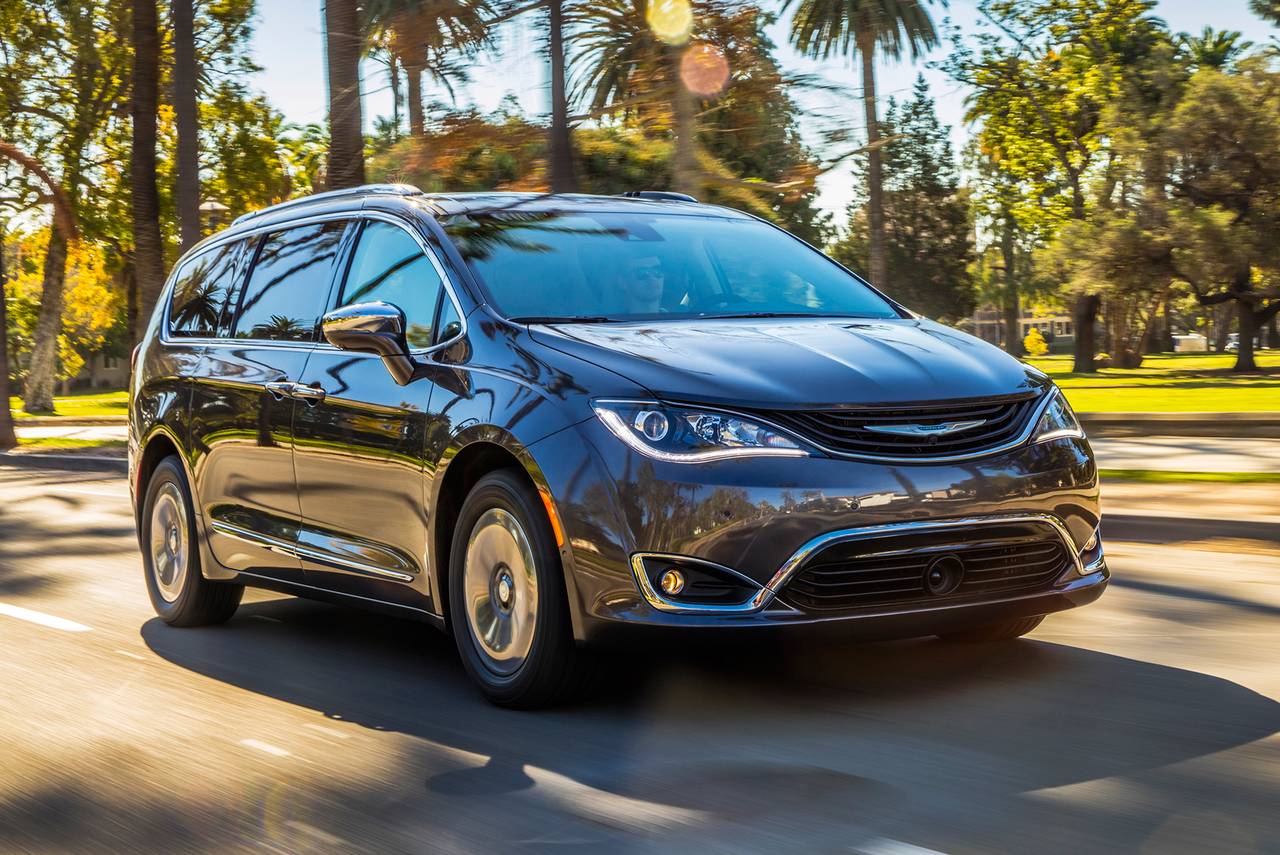
Unlike traditional hybrids, the Pacifica Hybrid is a plug-in model. This allows its battery pack to be charged using an external power source, offering up to 33 miles of electric-only driving range.
For many daily routines—such as school drop-offs, commuting, errands, and after-school activities—that’s often enough to avoid using gasoline entirely.
When additional range is needed, a robust V6 engine takes over seamlessly. The EPA estimates fuel economy at 32 mpg combined, making it the most efficient vehicle in the minivan class by a considerable margin.
Opting for the Pacifica Hybrid does mean giving up two key features available in the standard gas-powered model. First, the traditional Pacifica includes the Stow ‘n Go seating system for both the second and third rows, allowing the seats to fold flat into the floor for a completely level cargo area.
In the Hybrid model, the 16-kWh battery is stored in the space beneath the second row, which means those seats cannot fold flat as they do in the gas version. Second, the Hybrid does not offer a second-row bench seat, which limits passenger capacity to seven.
Aside from these limitations, the Pacifica Hybrid shares most of its strengths with the regular Pacifica. It features the same premium interior materials, an intuitive user interface, and a smooth, comfortable ride.
The base Touring Plus Hybrid is comparably equipped to a mid-tier standard Pacifica trim, ensuring that even the entry-level Hybrid offers a strong feature set.
Meanwhile, the range-topping Limited trim, though more expensive, doesn’t significantly widen the price gap, largely because the Hybrid’s starting price is already high rather than the Limited trim being unusually affordable.
If you can get past the higher initial cost and the absence of second-row Stow ‘n Go seating, the Pacifica Hybrid presents a compelling choice. It stands out with its generous cargo and third-row space, outperforming any competitor in these areas, all while delivering exceptional fuel efficiency in a handsome and well-equipped minivan package.
2018 Chevrolet Malibu Hybrid
The 2018 Chevrolet Malibu Hybrid is praised by owners for its roomy interior and impressive fuel efficiency.
However, several owners have reported engine failures and malfunctions with the fuel sensor. There have also been instances of reduced power, which could pose serious safety risks during driving.
Moreover, the 2018 Chevrolet Malibu has been subject to six recalls, one of which involves leaking transmission fluid. While some reviews are favorable, the overall feedback indicates ongoing reliability concerns with this model.
The Malibu sits as Chevrolet’s second-largest and priciest sedan, positioned above the compact Cruze and below the full-size Impala. It’s also Chevrolet’s only other electrified sedan, with the automaker’s electric lineup including the Volt plug-in hybrid and the all-electric Bolt hatchback.
The 2018 Malibu Hybrid is offered in a single, well-equipped trim level. Standard features include Chevrolet’s MyLink infotainment system with a 7.0-inch touchscreen, Bluetooth connectivity, SiriusXM satellite radio, OnStar 4G LTE with a Wi-Fi hotspot, and both Apple CarPlay and Android Auto integration.
Additional standard amenities consist of an eight-way power-adjustable driver’s seat, a 3.5-inch driver information display, a hybrid-specific gauge cluster, dual-zone automatic climate control, 17-inch aluminum wheels, automatic headlights, OnStar Guidance, OnStar Basic, and a rearview camera.
Optional upgrades are available through packages. The Leather package adds a six-way power passenger seat, leather upholstery, heated front seats, and a Bose premium audio system.
The Convenience and Technology package enhances the setup with features like remote engine start, an auto-dimming rearview mirror, an 8.0-inch touchscreen display, and wireless smartphone charging.
Powering the Malibu Hybrid is a 1.8-liter inline-four engine producing 122 horsepower and 130 lb-ft of torque, paired with two electric motors. Together, the system generates a combined output of 182 horsepower and 277 lb-ft of torque.

Power is sent to the front wheels through a continuously variable transmission (CVT). The EPA rates the Malibu Hybrid at 49 mpg in the city and 43 mpg on the highway, offering an impressive total driving range of 598 miles. During Motor Trend’s testing of the 2017 model, the Malibu Hybrid accelerated from 0 to 60 mph in 7.5 seconds and came to a stop from 60 mph in 121 feet.
However, this specific package is only available on the non-hybrid Premier trim. The Malibu Hybrid instead offers a more basic low-speed emergency braking system via the Driver Confidence Package.
With this package, the Malibu received an Advanced rating—the second-highest—for front crash prevention, successfully avoiding a 12 mph collision and reducing impact speed by 9 mph at 25 mph. The 2018 Malibu did not qualify for Top Safety Pick status due to receiving a Marginal rating in the passenger-side small overlap front crash test.
Other safety features included in the Driver Confidence Package are front pedestrian braking, automatic high beams, front and rear parking sensors, lane change alert with blind-spot monitoring, lane keep assist, a following distance indicator, forward collision alert, and rear cross-traffic alert.
The Malibu Hybrid offers 11.6 cubic feet of cargo space in the trunk, less than the 15.8 cubic feet found in the non-hybrid version.
Front passengers benefit from 42 inches of legroom, while rear-seat passengers have 38.1 inches. Comparatively, the Ford Fusion Hybrid leads in all these categories, providing 12.0 cubic feet of cargo room and legroom measurements of 44.3 inches in the front and 38.8 inches in the back.
Technology is a strong point for the Malibu Hybrid. Standard features include a 7.0-inch touchscreen with the Chevrolet MyLink interface, Apple CarPlay and Android Auto compatibility, SiriusXM, Bluetooth, and a USB port (with the option for dual USBs). OnStar Guidance, 4G LTE connectivity with a Wi-Fi hotspot, and OnStar Basic are also included.
Upgrades include an 8.0-inch touchscreen with navigation and a nine-speaker Bose audio system. Additional available tech features consist of remote engine start, wireless smartphone charging, and a suite of driver assistance features.
In a Quick Test review of the 2016 Chevrolet Malibu Hybrid, our initial driving impressions were positive. We noted, “The electric motor provides plenty of low-end grunt off the line, though the 1.8-liter engine felt coarser as it climbed up the rev range compared to the gas-only turbo engine options.
The steering is nicely weighted for the class and provides a linear and predictable feel, and the suspension is nicely tuned for a balance between ride comfort and handling.”
One standout comment was, “It rides great and is way quieter than the Audi A6 on the road.” We also appreciated the abundant standard technology: “The car can be a mobile hotspot with 4G connectivity, and it provides Apple CarPlay and Android Auto.
It also has techno-safety features such as adaptive cruise control, active headlight controls, and front pedestrian alert.” Ultimately, we concluded, “Overall, the Malibu is vastly improved, and the new hybrid is one of the best in the segment.”

